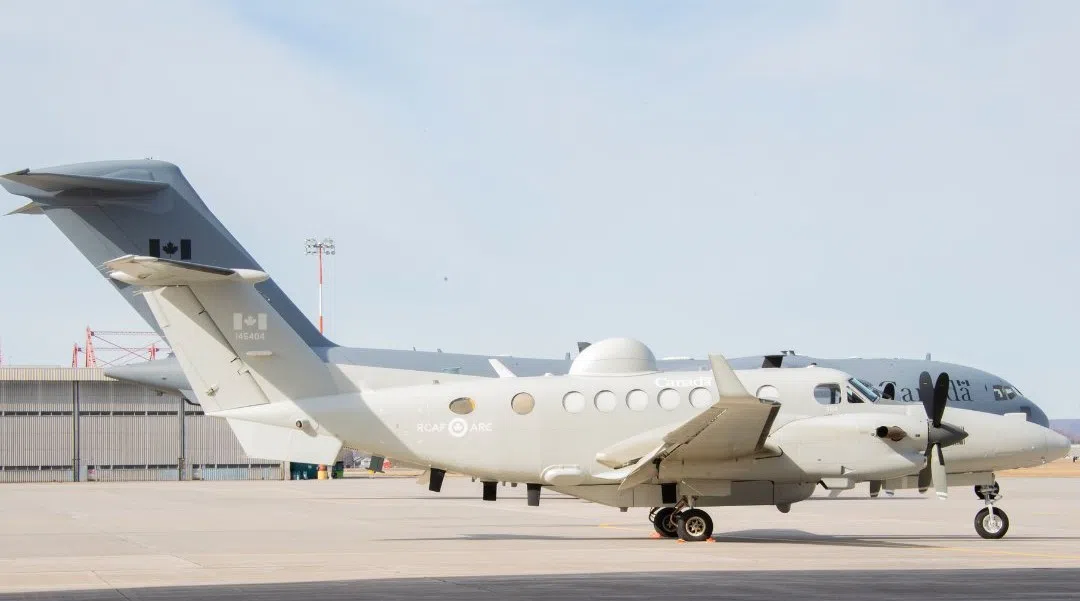
The Department of National Defence has announced an $850-million investment for upgrades at CFB Trenton and new aircraft. /RCAF/X photo
CFB Trenton will undergo an $850-million transformation and welcome new aircraft to the Royal Canadian Air Force (RCAF) fleet over the coming years, Minister of National Defence Bill Blair has announced.
Blair visited Canadian Forces Base Trenton – home of the RCAF air mobility operations in Canada – on Friday, announcing the multi-million-dollar investment to upgrade CFB and plans for the base to host Canada’s new fleet of CC-330 Husky strategic tanker transport aircraft.
The upgrades will enable CFB Trenton to serve as the eastern main operating base for the new CC-330 Husky fleet, it was explained.
“As we celebrate the 100th anniversary of the Royal Canadian Air Force, I am more confident than ever in its future,” said Blair, in a recent Department of National Defence (DND) release.
“With new fleets of fighter jets, maritime patrol aircraft, tanker and transport aircraft, and more arriving throughout the next few years, we are building the Royal Canadian Air Force of tomorrow. These significant investments in our military will enable the RCAF to better defend Canada and strengthen Canada’s ability to contribute to our NORAD and NATO alliances,” added Blair.
According to the DND, the $850-million investment will fund what’s described as “major airfield and infrastructure work” at CFB Trenton, including development and design of a two-bay hangar, an upgraded apron and runway, taxiways, and other supporting infrastructure.
Through the strategic tanker transport capability (STTC) project, Canada is acquiring nine CC-330 Husky aircraft, noted Blair.
This will almost double the size of the previous fleet. The first Husky aircraft arrived in Canada in 2023 – the second was delivered and joined the fleet in February of this year.
Initial operational capability for the CC-330 Husky fleet is planned for 2028-29 – full operational capability will follow by 2032-33, reported the DND.
While currently configured for transport, the aircraft will ultimately be converted to serve as a “multi-role tanker transport aircraft,” explained officials.
The new aircraft will provide RCAF with “increased flexibility” to fulfill a variety of air-mobility missions, including air-to-air refueling, passenger transport, aeromedical evacuation, and strategic transport.
During the visit, Blair also welcomed another addition to the fleet and toured the first of three new CE-145C Vigilance aircraft – it arrived in Trenton on Feb. 23, 2024. (The remainder are anticipated in spring 2024, with full operational capability expected about one year later.)
The CE-145C Vigilance is a modified Beechcraft king air 350ER turbo prop aircraft under the
MAISR project – it will provide a new manned airborne intelligence surveillance and reconnaissance (MAISR) capability for the Canadian Special Operations Forces Command (CANSOFCOM), reported the DND.
With state-of-the-art sensors and secure communications equipment, these aircraft will provide a vital new capability for the CAF, enabling enhanced situational awareness and decision-making during operations on the ground, said officials, noting these aircraft will primarily be used to support CAF operations.
During its 100th anniversary year, the RCAF is undergoing its largest transformation in a generation, noted Blair.
Since 2022, the Government of Canada said it has finalized the procurement or upgrade of about 140 new or refurbished aircraft for the RCAF.
“The threat to Canada’s sovereignty and interests abroad, created by competition for global power and advancing technologies, remains as significant now as any time in our history,” noted RCAF Commander Lt.-Gen. Eric Kenny.
“The Royal Canadian Air Force must be ready answer when our nation calls with a mission-ready, well-equipped, and combat-capable force. These investments will help build a world-class RCAF that will continue to meet Canada’s air and space defence requirements for years to come as an agile, integrated and inclusive air and space force.”
The STTC project has the potential to create or maintain 1,050 jobs annually and contribute $145 million to GDP over the life of its contract; the acquisition and maintenance contracts for the MAISR project could create or maintain about 65 jobs and contribute $7.5 million annually over its contract, noted DND officials.
(Written by: Sarah Hyatt)



